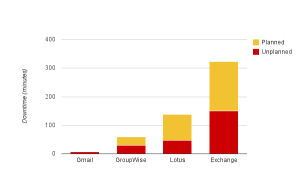Friends,
Today I am going off-topic because I believe in professional integrity, business ethics, and good business practices. Having been an IT executive for almost two decades, I thought I had seen it all when it comes to questionable competitive strategies. I must note that normally I don’t believe in conspiracy theories and would not want to create one. What I’m about to tell you may not sound outrageous, but I urge you to take a moment and think about the consequences should such business practices become the norm.
Every blog is subject to scrutiny by its readers. I’m confident that every blogger looks forward to receiving comments because it means the topic is of interest to others. While some comments can be positive, negative, provocative, weird etc., others deserve special attention. I am not talking about blatant spam. It deserves no attention and more often than not is taken care of by anti-spam filters. The majority of spam comments are made by amateur Internet marketers who try to implement black-hat marketing tactics, hoping to succeed. Well, good luck with that.
Last week, a comment I would normally consider as spam truly caught my attention. A person commented on the Google AppsTM vs. MicrosoftTM BPOS comparative analysis post. The idea behind the comment was clearly to negate the value of Google Apps using unfounded references, as if people had never seen or used Google Apps. The writer was trying to convince others that the product offering is not up to par and that Microsoft BPOS is, without doubt, the way to go.
We all have personal preferences when it comes to pretty much everything—from food to vacation destinations. However, for the record, I would like to state that at the time the comparative analysis document was developed, we did not have any preference one way or the other. If you take a moment to review the blog entry in question, you will quickly realize that all we do is express our opinion while striving to provide an objective review based on a series of tests of both Google Apps Premium and Microsoft BPOS.
I always look up the originating IP address every time I receive a comment notification, unless it is blatant spam. To my surprise, the IP address in question resolved to tide534.microsoft.com. According to various web sources, tidexxx.microsoft.com IP addresses are Microsoft internal proxy servers. It seems that at times, traffic from a similar source targets blogs and other web resources, specifically those that have to do with Microsoft technologies. Thus far, the “tide” was silently visiting, but now it has spoken. The visitor in question used an anonymous Yahoo!TM email address that seems to be valid. Several hours later, I received a request from Microsoft employee for a complete comparative analysis document. The request was fulfilled; however I have not received any feedback.
In my view, based on the above information, it is safe to assume that the writer is either a Microsoft employee or at least affiliated with the company in some way so that they have access to Microsoft’s internal network. Now the question is why would a Microsoft employee comment on a blog post that specifically touches on its own product and clearly shows that the product performance and/or features fall short compared to direct competition? Call me naive, but I do not have an answer. It seems very low for an organization like Microsoft to employ such tactics in order to compete, not to mention it is an unfair practice. Can you imagine what would happen if competitors start trashing each other’s products in blogs, forums, and other social media mediums?
Right or wrong? You decide.
Until next time,
Steve E. Driz
Filed under: Uncategorized | Tagged: Google Apps Premium, Microsoft, Microsoft BPOS, microsoft strategy, microsoft's competition | 2 Comments »



You must be logged in to post a comment.